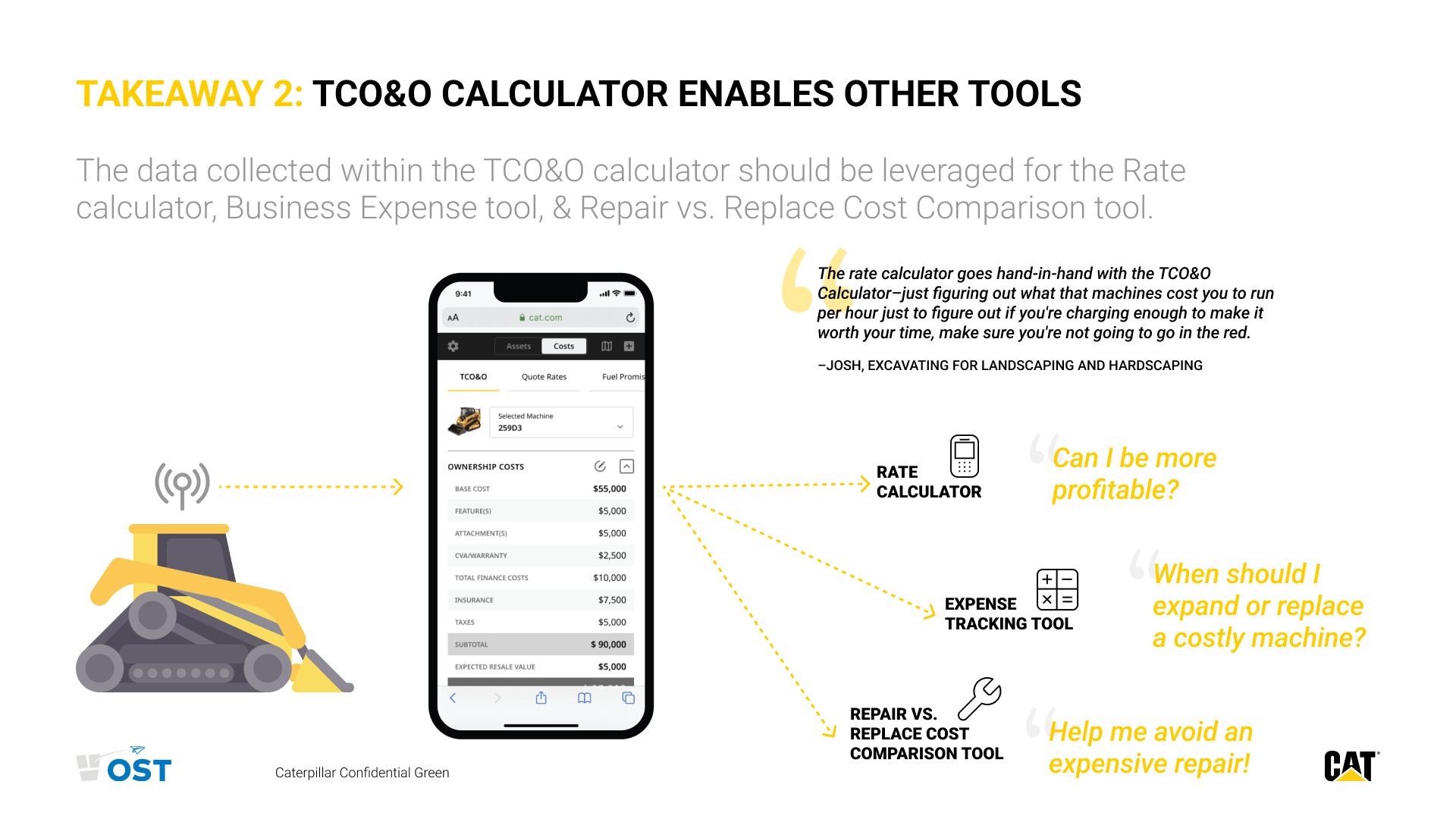Cat total cost of ownership - + Leveraging UX research to validate or contradict business-line assumption
Project completed while employed at vervint.
In response to the challenge of assisting small business owners in maximizing their investment in Cat machines, our team embarked on a project aimed at understanding the budgeting practices of owner/operators and identifying potential unmet needs. The ultimate objective was to glean insights that could inform solutions to enhance customer satisfaction and drive business growth for Cat.
The Challenge:
Our project encountered several hurdles from the outset. Initial assumptions were likely biased, and the absence of consent for follow-up with survey participants posed a challenge. Additionally, resource constraints arose when our design lead departed soon after project initiation. Furthermore, the COVID-19 pandemic complicated the process of finding and engaging qualified customer feedback participants.
Methods:
To understand the budget monitoring behaviors of Cat retail customers, we engaged in qualitative research, focusing on heavy equipment owners responsible for expense tracking within their companies. We developed a research plan, crafted interview scripts, and recruited participants, drawing upon personal and professional connections. Despite difficulties in finding and scheduling qualified participants, we conducted in-depth interviews and gathered valuable insights.




One of my favorite customer feedback stories came out of this trade show. Jeremy is a concrete and excavating company owner. He started digging foundations by hand with a large crew. He then proceeded to rent a cat excavator. He told us that he was operating out of fear and extra caution, "what if I don't get enough work," or "what if I spend money and can't pay my employees or myself?" after a year of renting, he had a conversation with his cat salesperson. "do you realize that you've spent $180k to rent a machine this year?" after some careful consideration and reviewing his operating costs and budget, he bought an excavator. he described it as a turning point in his business. rather than operating out of fear, this heart-to-heart conversation with his cat dealer enabled him to change his mindset to opportunity-based decision-making. He now looks at investments in heavy equipment from a different lens, and his company has grown exponentially.



Recommendations:
Our findings highlighted a lack of familiarity with the concept of Total Cost of Ownership (TCO) among owner/operators with limited machines, who relied on anecdotal estimations for equipment maintenance costs. In response, we proposed developing digital solutions to assist these individuals in optimizing their operations and increasing loyalty to Cat. Our recommended approach involved verifying the availability of machine connectivity at minimal cost, building clickable prototypes, and iteratively testing concepts with customers, both virtually and at industry events.
Customer-centric Outcomes:
By leveraging UX research to validate assumptions and identify potential go-to-market strategies, we aimed to empower owner/operators with tools and insights to enhance their profitability and efficiency. Through our efforts, Cat stands poised to deepen its relationship with customers, providing tailored solutions that address their evolving needs and foster long-term partnerships.












